Disclosure: Chopin Vodka hosted me for a vodka tasting at The Pierre Hotel in New York City. As always, all opinions expressed are my own. Please drink responsibly.
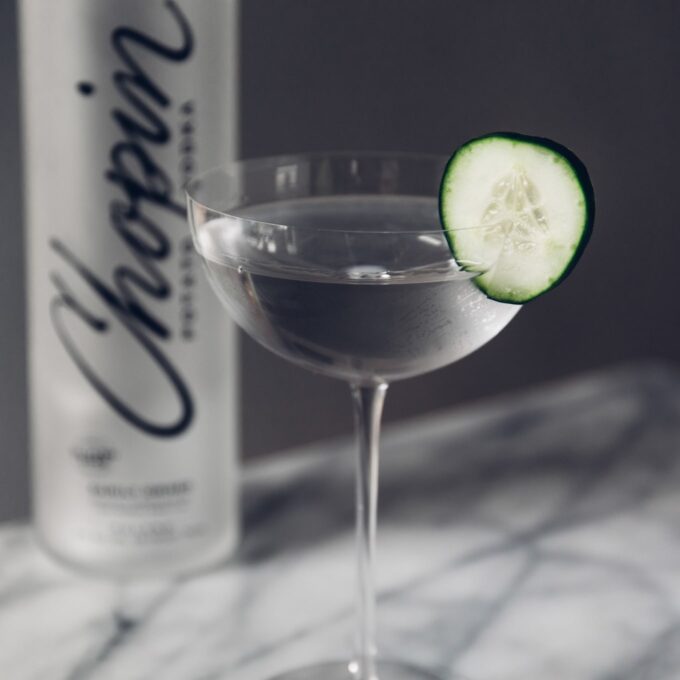
When you think of vodka, what descriptors come to mind? Odorless? Colorless? Tasteless?
For most of my adult life, I’ve viewed vodka through this lens. I haven’t had much of an understanding of what defines vodka or the nuances between various styles.
Sure, I’ve been able to discern which bottles I’ve liked best for cocktails. Beyond that, as a consumer, I truly knew nothing about vodka.
That is, until I attended a guided vodka tasting with Tadeusz (Tad) Dorda; founder and CEO of the renowned Polish distiller, Chopin Vodka. With the backdrop of The Pierre New York’s Rotunda, Dorda completely transformed my conception of what vodka can (and should) be.
In this post, I’ll take you through notes for each of the spirits we tasted, starting with the single-distillation spirits at the foundation of Chopin’s vodka portfolio. Then, you’ll see how they connect and compare to the three styles of Chopin’s quadruple-distilled vodkas themselves.

History of Chopin Vodka: A Family Business
Chopin Vodka is family-owned producer, based in a pastoral 19th-century distillery in the village of Krzesk, Poland. The Dorda family makes their small-batch craft vodkas from locally-sourced raw ingredients, selected with a discerning commitment to quality.
The Chopin Vodka portfolio has won numerous awards since its branding in 1992, placing it in the top rankings of the global vodka market.
Dorda’s passion for his craft is palpable. He speaks about vodka distillation and the Chopin portfolio with a great deal of expertise, and a deeply-rooted passion and respect for tradition.
Much of Chopin’s production process is still completed by hand. As you can see in the photo below, Chopin’s distillery even utilizes its original copper still.

Chopin Vodka is named for none other than Polish, Romantic-era composer, Frédéric Chopin. (If you’ve been a longtime Striped Spatula reader, you might remember that I’m a classically-trained pianist, and that my favorite composer is Chopin. At first glance, I was drawn to the brand by name alone!)
Vodka Tasting: Chopin Single Ingredient
Chopin’s portfolio encompasses potato, rye, and wheat vodkas. Their single ingredient craft spirits represent the first distillation in the vodka-making process.
Chopin Single Ingredient gives the consumer the opportunity to experience each style’s terroir (the flavors and aromas owed to the environment in which the raw ingredients grow; soil, climate, etc.) more prominently. Multiple distillations soften these notes.
Single Potato
Single Potato is the heaviest of Chopin’s single ingredient spirits. It has an autumnal or wintry feel.
In appreciating the aromas before my first sip, there was no question that this spirit is made from potatoes. The familiar aroma of the potato starches is unmistakable. While the flavor is earthy, Single Potato is creamy on the palate.
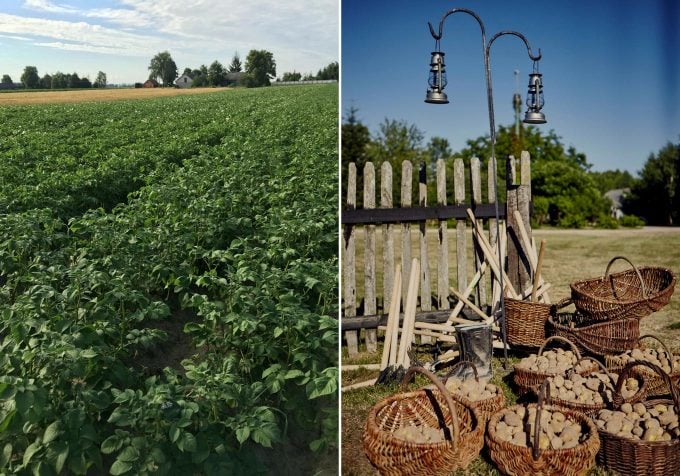
Chopin makes its Single Potato from a blend of late-harvest potatoes with a high starch content. Depending on the weather conditions during the growing season, harvest occurs between September and November each year.
As Dorda explained, vintages of Single Potato will have different characteristics, as the potatoes will taste differently from year to year.
Single Potato vodka does not require chilling to appreciate its flavors and aromas. You can enjoy it neat, at room temperature.
Single Rye
This spirit has more of an alcohol aroma than the Single Potato, but the rye itself is not as assertive. On the palate, the flavor of the rye finishes with a pleasant bitterness.
As Dorda noted, this bitter quality is particularly useful when you mix the spirit with sugars.
Single Wheat
Single Wheat was the lightest and most summery of the single-distilled spirits. With a subtle aroma and a light taste, it reminded me the most of what I’ve come to expect from vodka itself.
Sipped on its own on the summer afternoon of the vodka tasting, I found myself repeatedly drawn back to the Single Wheat.
Chopin Vodka – Four Distillations And Three Styles
Chopin produces its vodkas by distilling the Single Ingredient spirits an additional three times for a total of four distillations. This almost entirely removes the primary aromas described above, leaving delicate nuances in bouquet and flavor to discern them.

Chopin Potato Vodka (Black Label)
While potatoes are the traditional choice for vodka, there are comparatively few potato vodkas on the market today. Dorda explained that it is more expensive to make potato vodka than some of the other popular styles (like corn). Making potato vodka requires additional work, such as washing the potatoes.
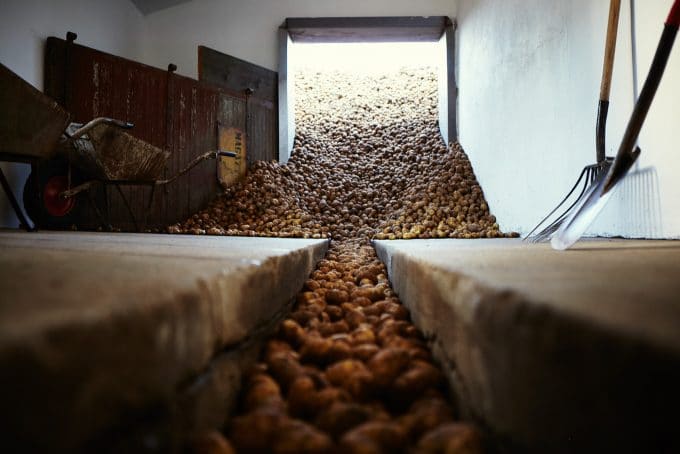
Only a small percentage of the actual potato solids are consumed in making vodka. Those that remain go back to the distillery’s local farmers to feed the animals, so there is no waste.
While the aromas of the potatoes have been distilled out of the late-harvest Single Potato spirit, the creamy quality remains upon sipping.
This is the kind of vodka that’s perfect for enjoying on its own or in a martini. (Though, I’ve since used it in a few mixed creations when entertaining and we’ve enjoyed it very much.)

Chopin Rye Vodka (Red Label)
As with the potato vodka, the distillation process removes much of the Single Ingredient Rye’s aroma. The pleasantness of the bitter finish, however, remains.
Chopin’s rye vodka has a crisp, peppery quality and would be the perfect choice for a Bloody Mary or your favorite sweet cocktails.
Chopin Wheat Vodka (Gold Label)
Like its single ingredient counterpart, Chopin’s wheat vodka was the sweetest and most delicate of the selections. I found it quite sippable.
Dorda cautioned that wheat vodka is easy to overpower, so it’s important to be thoughtful about what you’re mixing it with. Think light, summery cocktails, or enjoying it on its own.

Chopin Young Potato
While the single-distilled spirit and potato vodka described above hail from late-harvest potatoes, Chopin also offers a young potato spirit.
Single Young Potato utilizes low-starch Denar potatoes. The potatoes are planted at the beginning of April and, depending on the weather, are typically dug at the beginning of July.
So, they’re only in the ground for 2-3 months, as compared to 5-7 months for the late harvest.
When I tasted Chopin’s 2015 Young Potato, I immediately noted that it didn’t have the heavy, earthy aroma of the late-harvest potato. It was ethereally smooth on the palette. I, and the guests seated nearest to me, repeatedly remarked on how much we loved it.
Chopin Vodka: Elevating the Global Vodka Discussion
Before I had the honor of meeting Tad Dorda, I typically used words like “terroir” and “bouquet” to discuss wines, not vodka. With Chopin’s portfolio, however, they fit quite well. There is so much more to vodka than the colorless, tasteless liquor to which many consumers, myself included, have been conditioned.
I hope that you have found these vodka tasting notes as enlightening as I have, and that they will inspire you to explore the world of vodka more fully.
If you aren’t quite ready to sip your vodka neat, don’t miss the Chopin Spring Equinox, a beautiful cocktail served at the tasting event. Chopin and Perrine at The Pierre have shared the recipe with me and it’s a wonderful cocktail for entertaining.
For more information about Chopin Vodka’s portfolio, visit them on the web at chopinvodka.com.

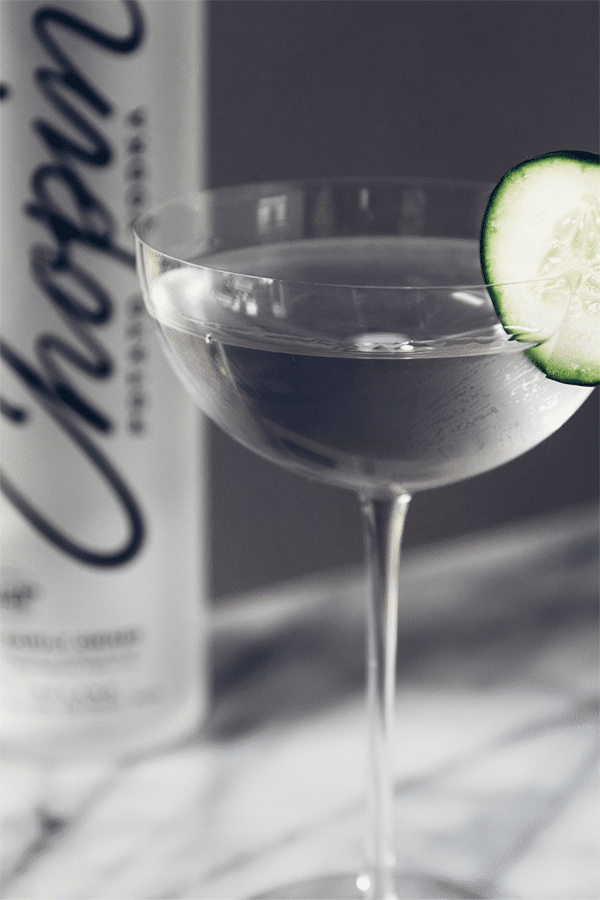

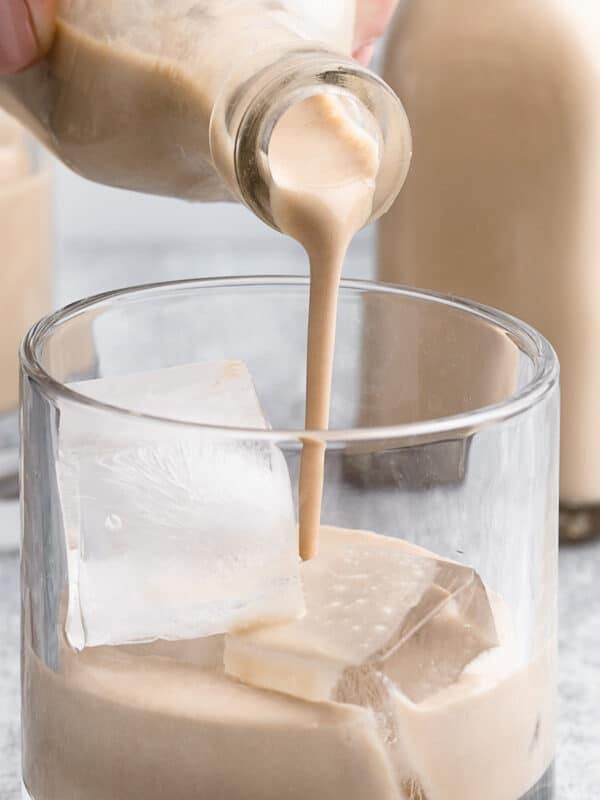












What a great article on the particulars of vodka. I had no idea there was so much that went into the characteristics of this spirit. I can see how somebody who is so passionate about their craft produces such a fine product.
This was so interesting! I feel like I was on the tour with you. What an amazing experience! I’m going to look at vodka in a whole new way after reading this.
I haven’t tried chopin vodka yet, but I had many of the same feelings that you did about vodka. Too simple, too harsh – in fact to me it reminded me too much of pure alcohol, which I used to use when cleaning lab benches. Vodka smelled like work. But then I tried a vodka that was completely without any harsh notes, and it was a revelation. I realize now that with attention to ingredients and technique, a vodka can truly be something special. This sounds like it was a great event, and certainly an informative one! Cheers, and thanks for sharing!
Oh my goodness, lucky you!! I didnt fully appreciate vodka until last year when I visited a vodka distillery in Tasmania, Australia! Once you know how a good vodka should taste there is just no going back – no comparison! So very jealous of your tasting experience, how fun and different!
This was fascinating! I’ve been scoping out the vodka aisle ever since you mentioned going to this tasting, but I wasn’t sure what to look for LOL. I’ll look for Chopin- I want to try all of them though bahaha! I had no idea there were so many differences in vodkas!
Vodka is pretty much the only hard liqueur I can drink, with the exception of a good quality rum. But vodka always wins. It’s just crisp and clean, whereas things like bourbon or rye turn my belly almost instantly; they just taste like a bad night waiting to happen, haha.
HOWEVER. I’ve never sipped vodka neat. I’d try it, though. Maybe with a little spritz of lemon and a slice of cucumber? Is that cheating? :)
Thank you for all the wonderful information about Chopin vodka and vodka in general. Growing up my family owned a small distillery and the production of alcohol and spirits was always part of our daily conversation. I love vodka and a good vodka cocktail. I will be looking for Chopin vodka so I can try it.
I really had no idea there were so many nuances to vodka. This was such an enlightening post and the imagery was gorgeous and helpful to understanding what goes into the making of the different vodkas. What a cool experience to learn all about this!
Okay this post is amazing. I love how informative this post is! I definitely came into this thinking that it’s a colourless and ordourless drink. But now I know better! I’ll have to pick up a bottle the next time I’m at the store.
Oh wow, this is so interesting! I never knew much about vodka either, so it is really fun to learn as much as I have just now! I am really craving a nice vodka cocktail now.
Very interesting. I’ve never wondered too much about vodka before since we are wine drinkers. But I do like to learn and I would love to sample some of the Chopin young potato vodka. Is this brand readily available? I’ll have to check it out when we go pick up our wine.
Wow! I’ve learned more about vodka in this post than in the 10+ years I’ve been drinking it! And I definitely am not ready to sip it on it’s own yet, so thank you for that cocktail recommendation. I can’t wait to try Chopin Vodka!!
Wow…I didn’t know there were so many variations of vodka….other than different flavours. I think I need to check out this potato vodka. Sounds like that would have been a VERY interesting tour/tasting experience for sure. The things you can learn when you do this type of tasting.